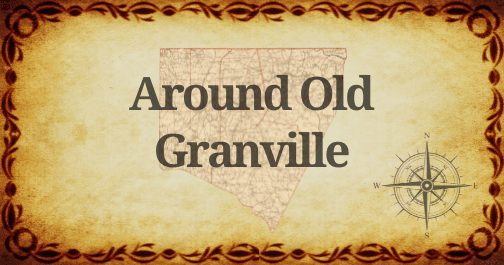Kerr Lake will be the destination for many boaters and campers over the long holiday weekend, but the area surrounding – and under – the man-made lake has been attracting people for literally hundreds of years.
Stately homes sitting on impressive tracts of land belonging to families with names like Hargrove and Henderson, made way for the U.S. Army Corps of Engineers project. The lake, no doubt, has unrivaled recreational value today, the fertile lowlands created by Nut Bush creek as it makes its way to the Roanoke River provided farmers the perfect spot for tobacco and other crops.
One of those stately homes was Hibernia, built by the Hargrove family in 1798. The house was torn down in 1955, said local historian and N.C. Room Specialist Mark Pace. Few photographs exist of the plantation home, but remnants remain – if you know where to look.
Pace and WIZS’s Bill Harris recently accepted an invitation from Parks Superintendent Bill Stanley to come explore some of the less-traveled parts of the lake, which has nine state-maintained parks along its North Carolina shoreline.
“We went looking for the remains of Hibernia,” Pace said on Thursday’s Around Old Granville segment of TownTalk. “It was one of the more impressive old houses” in the area, he noted. And the two intrepid explorers are pretty certain they found the exact spot where it once stood.
Back then, family homes usually had a family cemetery nearby and so when the Corps was planning to build the lake, the cemeteries’ contents had to be moved. The family plots were moved to a new family cemetery and those of the enslaved people were moved to a couple of different churches nearby.
The earliest gravestone is from 1843, but the enslaved people’s graves were marked only with fieldstone.
In addition to the original house location, they also found the well, the kitchen foundation and a large, brick-lined pit that most likely was the ice house.
Moving over to Satterwhite Point, the duo explored a spring that had been discovered in the 1970’s at the J.C. Cooper campground. It likely was used for nearby Ashland, which was built by the Henderson family in 1740.
“What amazed me is how clear…and cool the water was,” Pace said. “It could have been
the reason why the Hendersons built the house where they did.” There’s a tulip poplar tree still there that possibly predates the house, Pace said.
Do you have memories of the area around Kerr Lake before there was a lake? Call Pace at 919.693.1121.
CLICK PLAY!
